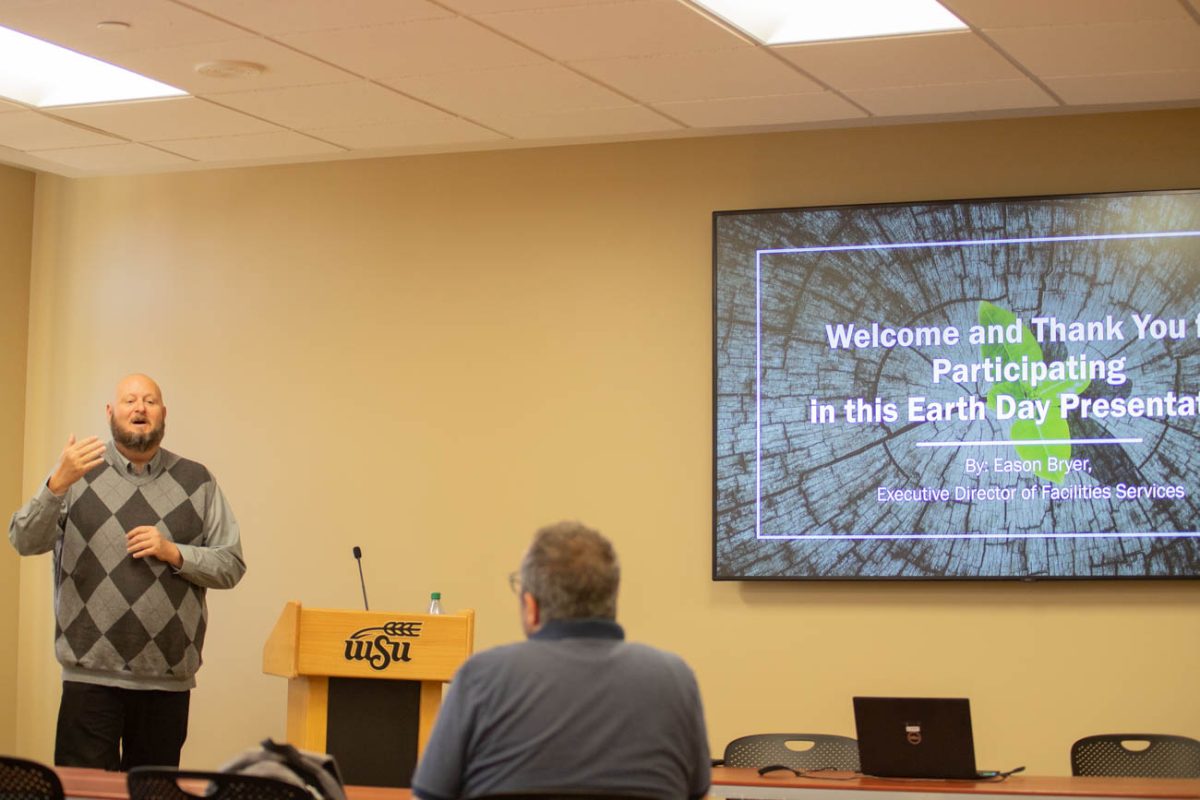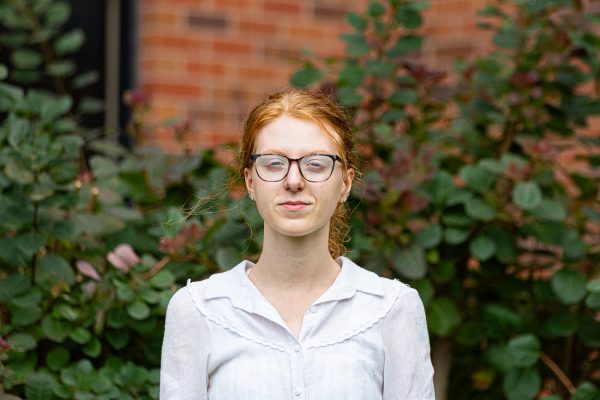Wichita State is working toward several sustainability goals, but setbacks, including recent tariffs implemented by President Donald Trump, put the university short of those goals.
In a presentation to students and faculty, Executive Director of Facilities Services Eason Bryer talked about the large environmental footprint of WSU’s campus
“We (Wichita State) are what Evergy and … our natural gas service call ‘high end users,’” Bryer said. “So we’re the whales of energy consumption, just like any other industry.”
Bryer, who sits on the university’s sustainability committee, delivered the presentation of WSU’s sustainability efforts to mark Earth Day on Tuesday. He outlined changes the university has made during his time in the role, as well as its ongoing goals and some of the challenges that stand in the way.
Bryer pointed to several ways the university has become more sustainable, including having food waste composted, adding several electric vehicles to the “fleet” operated by the facilities department, and constructing two buildings that received awards for their eco-friendly design.
Bryer said that through changes, like the COVID-19 pandemic and more recent tariffs, WSU has encountered many unexpected challenges in pursuing its sustainability goals.
“We haven’t achieved what we want to achieve, but we’ve made some good steps, and with the help of faculty, staff, students and visitors, we can do a lot more to make WSU a shining example of what sustainability should be,” he said.

Setting goals
Bryer explained several sustainability goals outlined in the university’s master plan. The plan, published in 2024, outlines ways in which the campus may change in the next 10 years.
Bryer pointed to some areas in the plan’s map of a 2034 WSU campus, including the removal of some roads in favor of green space.
“One thing you’ll notice that’s completely different about this plan compared to the existing campus is the volume of green space and the absence of some roadways, the absence of some asphalt and the absence of some concrete,” Bryer said. “As we remove those things, it reduces the heat load of the campus as a whole, and it makes a more sustainable environment.”

Changes toward sustainability
In recent years, even before the adoption of the master plan, Bryer said WSU has been making pushes toward sustainability, including working to conserve energy and water and making changes to the campus landscape.
He explained that the campus’ historic buildings get power from a central plant. The university, he said, has moved away from this by constructing many buildings on the Innovation Campus with their own power generation, conserving energy that would naturally be lost traveling between buildings.
WSU also has a policy on what temperatures thermostats should be set at, an important part, Bryer said, of keeping energy use down.
“It sets a minimum degree that we heat to in the winter, and it sets a maximum that we cool down to in the summer,” Bryer said. “And by following those, we know we can save the university hundreds of thousands of dollars over the next few years. And those hundreds of 1000s of dollars translate into kilowatts, megawatts — cubic feet of natural gas burnt and carbon into the atmosphere.”
In addition to conserving energy, Bryer said, WSU’s landscaping is becoming more eco-friendly too, with the addition of more “zeroscapes,” or plant-free rock landscaping, as well as native plants that require less water.
“We’ve kind of gotten out of Mother Nature’s way and planted what does well in Southcentral Kansas that doesn’t require pesticide and herbicide, and it doesn’t require us to dump gallons and gallons of water on a regular basis,” Bryer said.
He also pointed to two of WSU’s newer buildings: Woolsey Hall and the Digital Research and Transformation Hub, which received gold and silver level ratings, respectively, from the Leadership in Energy and Environmental Design certification.
Challenges
Bryer said that some goals have fallen short, including one he set in 2019, for his department to shift toward using electric vehicles. Bryer said by 2025, their goal was that 35% of the vehicles would be electric but only 14% of them are now.
Supply chain disruptions during the COVID-19 pandemic, Bryer said, are part of what put them behind on the goal. Recent tariffs and economic conditions, he said, are another challenge to contend with.
“Tariffs have kind of bogged down our ability to purchase certain imported items,” he said. “ … Anytime an absolutely required purchase — like the electricity or water we drink — anytime those go up, those pull budget dollars away from our dreams and our aspirations and the things we want to do to make the campus better.”
Despite setbacks, Bryer said WSU will continue to make changes to be more sustainable.
Bryer encouraged people to reach out to him at [email protected] with any questions or ideas about sustainability on campus.




